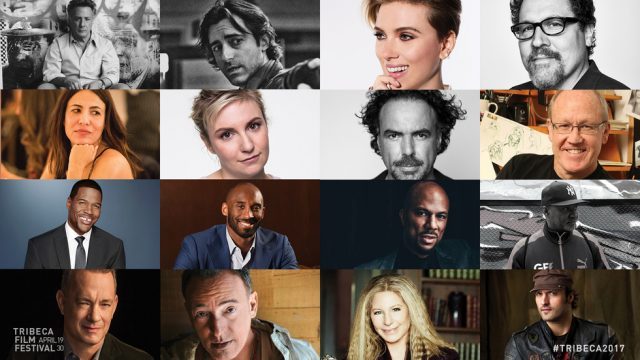
TRIBECA FILM FESTIVAL
Multiple locations
April 20-30, free – $365 (most events $23.88 – $43.45)
tribecafilm.com/festival
Tickets are still available for most of the special screenings, talks, and live performances at the 2017 Tribeca Film Festival, taking place at such locations as the BMCC Tribeca PAC, the SVA Theatre, the Beacon, Regal Cinemas Battery Park, Radio City, the Town Hall, Cinépolis Chelsea, and the Festival Hub at Spring Studios. The guest list is pretty impressive, including Dustin Hoffman, Barbra Streisand, Philip Glass, Common, Scarlett Johansson, Michael Moore, Kathryn Bigelow, Johnny Lydon, Lena Dunham, Kobe Bryant, Aretha Franklin, Errol Morris, Faith Evans, Zac Posen, Lil’ Kim, Alejandro González Iñárritu, Julian Schnabel, a Flock of Seagulls, Christopher Plummer, Taj Mahal, Jennifer Hudson, Quentin Tarantino, and Bruce Springsteen with Tom Hanks (which is sold out), among many others. Oh, and how about this gathering, celebrating the forty-fifth anniversary of The Godfather: Francis Ford Coppola, Al Pacino, James Caan, Robert Duvall, Diane Keaton, Talia Shire, and Robert De Niro.
Wednesday, April 19
Gala — Clive Davis: The Soundtrack of Our Lives (Chris Perkel, 2017), followed by live performances by Aretha Franklin, Jennifer Hudson, Earth Wind & Fire, Barry Manilow, Carly Simon, and Dionne Warwick, Radio City Music Hall, $56-$281, 7:00
Thursday, April 20
After the Movie: Bowling for Columbine (Michael Moore, 2002), followed by fifteenth anniversary conversation with Michael Moore and others, SVA Theatre 2 Beatrice, $23.88, 7:00
Retrospective Special Screenings: La Belle et la Bête (Jean Cocteau, 1942), with live musical accompaniment by members of the Philip Glass Ensemble, preceded by a conversation with Philip Glass and Errol Morris, Town Hall, $55-$85, 8:00
Friday, April 21
Tribeca Talks: Directors Series — Jon Favreau with Scarlett Johansson, SVA Theatre 1 Silas, rush, 5:00
Special Screenings: The Public Image Is Rotten (Tabbert Fiiller, 2017), followed by a conversation with director Tabbert Fiiller and John Lydon, Tribeca Festival Hub, sixth floor, $23.88, 8:45
Saturday, April 22
Shorts: Blues Planet: Triptych (Wyland, 2017), with live performance by Taj Mahal and the Wyland Blues Planet Band, Tribeca Festival Hub, sixth floor, $23.88, 2:00
Tribeca Talks: Directors Series — Alejandro González Iñárritu, SVA Theatre 1 Silas, rush, 2:30
Special Screenings: The Third Industrial Revolution (Eddy Moretti, 2017), followed by a conversation with director Eddy Moretti and Jeremy Rifkin, Tribeca Festival Hub, sixth floor, limited, 5:00
Special Screenings: House of Z (Sandy Chronopoulos, 2017), followed by a conversation with director Sandy Chronopoulos and film subject Zac Posen, SVA Theatre 1 Silas, $43.45, 8:00
Tribeca Talks: Virtual Reality — Kathryn Bigelow & Imraan Ismail: The Protectors: A Walk in the Ranger’s Shoes, screening and conversation with Kathryn Bigelow and Imraan Ismail, Tribeca Festival Hub, sixth floor, $43.45, 8:15
After the Movie: Awake, a Dream from Standing Rock (2017), followed by a conversation with filmmakers Josh Fox, James Spione, and Myron Dewey and special guests, Cinépolis Chelsea 7, rush, 8:30
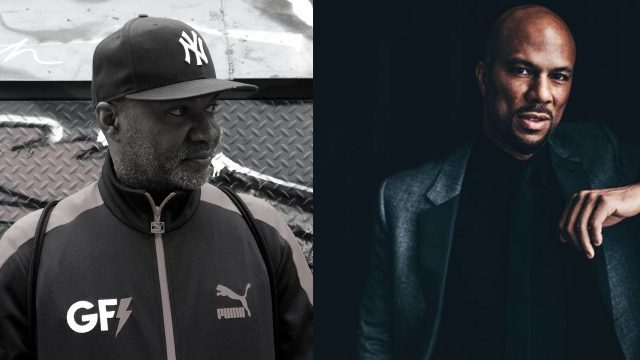
Nelson George will team up with Common for a screening, discussion, and live performance at Tribeca on April 23
Sunday, April 23
Tribeca Talks: Master Class — Dolby: Image and Sound Master Class with Imogen Heap, Dolby Cinema at AMC Empire 2, free, 12 noon
Tribeca Talks: Storytellers — Kobe Bryant and Glen Keane with Michael Strahan, BMCC Tribeca PAC, $43.45, 4:30
Tribeca Talks: Podcasts — Live from the Tribeca Film Festival: Gilbert Gottfried’s Amazing Colossal Podcast!, with Gilbert Gottfried and Frank Santopadre, Regal Cinemas Battery Park 11-4, $43.45, 5:30
Tribeca Talks: Storytellers — Common with Nelson George, screening of Letter to the Free, followed by a conversation with Nelson George and a live performance by Common, Tribeca Festival Hub, sixth floor, $43.45, 8:00
Monday, April 24
Tribeca Talks: Directors Series — Noah Baumbach with Dustin Hoffman, BMCC Tribeca PAC, $43.45, 6:00
Tuesday, April 25
Tribeca Talks: Storytellers — Lena Dunham and Jenni Konner, Tribeca Festival Hub, sixth floor, $43.45, 6:00
Tribeca Talks: Directors Series — Paul Feig, BMCC Tribeca PAC, $43.45, 6:00
Special Screenings: Paris Can Wait (Eleanor Coppola, 2016), followed by French food pairings inspired by the film, BMCC Tribeca PAC, $43.45, 8:00
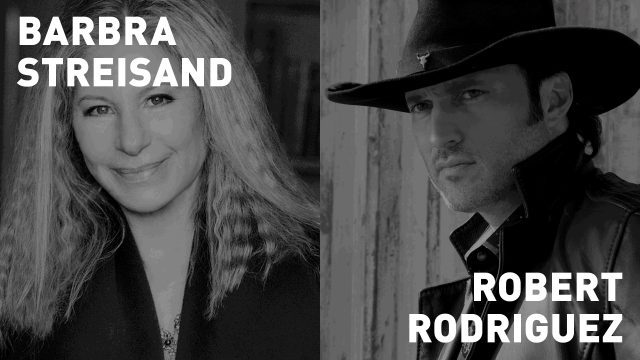
Pen pals Barbra Streisand and Robert Rodriguez will join together in conversation at the Tribeca Film Festival on April 29
Wednesday, April 26
Special Screenings: The Exception (David Leveaux, 2017), followed by a conversation with director David Leveaux and actor Christopher Plummer, BMCC Tribeca PAC, $23.88, 6:00
Special Screenings: From the Ashes (Michael Bonfiglio, 2017), introduced by Michael Bloomberg and followed by a discussion with director Michael Bonfiglio and special guests, Tribeca Festival Hub, sixth floor, rush, 6:00
Thursday, April 27
Gala — Can’t Stop, Won’t Stop: The Bad Boy Story (Daniel Kaufman, 2017), followed by a live concert featuring Combs and Mase, Lil’ Kim, and Faith Evans, Beacon, $71-$356, 8:00
Special Screenings — Warning: This Drug May Kill You (Perri Peltz, 2017), followed by a conversation with Dr. Nora Volkow, Dr. Andrew Kolodny, film subject Gail Cole, and producer Sascha Weiss, moderated by director Perri Peltz, SVA Theatre 2 Beatrice, $23.88, 8:45
Friday, April 28
Tribeca Talks: Storytellers — Bruce Springsteen with Tom Hanks, Beacon Theatre, 5:00
After the Movie: Reservoir Dogs (Quentin Tarantino, 1992), followed by twenty-fifth anniversary conversation with Quentin Tarantino and members of the cast, Beacon Theatre, $71-$356, 8:00
Special Screenings — Julian Schnabel: A Private Portrait (Pappi Corsicato, 2017), followed by a a conversation with director Pappi Corsicato and Julian Schnabel, SVA Theatre 1 Silas, $43.45, 8:30
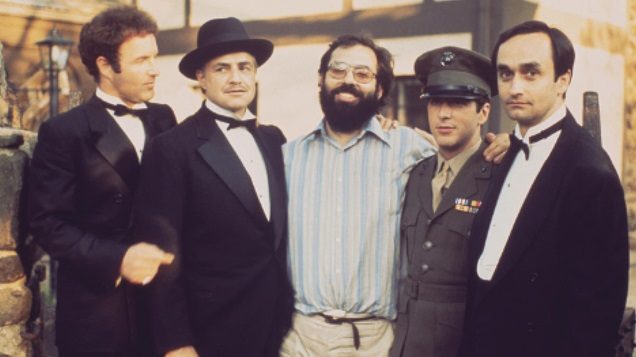
The forty-fifth anniversary of THE GODFATHER will be celebrated at Radio City as part of the Tribeca Film Festival, with James Caan, Francis Ford Coppola, Al Pacino, and others
Saturday, April 29
Before the Movie: Aladdin (Ron Clements & John Musker, 1992), twenty-fifth anniversary, preceded by a live performance by Aladdin singing voice Brad Kane, BMCC Tribeca PAC, free, 10:00 am
After the Movie: The Godfather (Francis Ford Coppola, 1972) and The Godfather Part II (Francis Ford Coppola, 1974), followed by a forty-fifth anniversary conversation with Francis Ford Coppola, Al Pacino, James Caan, Robert Duvall, Diane Keaton, Talia Shire, and Robert De Niro, moderated by Taylor Hackford, Radio City Music Hall, $46-$131, 1:00
Tribeca Talks: Master Class — Production and Costume Design, with Kristi Zea, SVA Theatre 2 Beatrice, free, 3:00
Tribeca Talks: Storytellers — Barbra Streisand with Robert Rodriguez, BMCC Tribeca PAC, $43.45, 6:00
Tribeca N.O.W. Special Screenings — Out of This World: Female Filmmakers in Genre, screening and conversation with filmmakers Nicole Delaney, Vera Miao, and Arkasha Stevenson, Cinépolis Chelsea 7, $23.88, 6:00
After the Movie — Chris Gethard: Career Suicide (Kimberly Senior, 2017), followed by a conversation with Chris Gethard and fellow comedians Pete Holmes, Abbi Jacobson, and others, SVA Theatre 1 Silas, $23.88, 8:15
Sunday, April 30
Tribeca Talks: Master Class — Cinematography, with Ellen Kuras, SVA Theatre 2 Beatrice, free, 4:00 PM
Special Screenings: Dare to Be Different (Ellen Goldfarb, 2017), followed by live tribute to WLIR with a Flock of Seagulls, Dave Wakeling of the English Beat, and the Alarm, Tribeca Festival Hub, sixth floor, rush, 6:00
Tribeca N.O.W. Special Screenings: The New York Times’ Op-Docs (2017), followed by a conversation with filmmakers Andrea Meller, Megan Mylan, Marisa Pearl, and Gina Pollack, SVA Theatre 2 Beatrice, $23.88, 6:15
Tribeca Talks: Podcasts — Live from the Tribeca Film Festival: Slate’s Trumpcast, with Jamelle Bouie and Virginia Heffernan, hosted by Jacob Weisberg, SVA Theatre 1 Silas, $43.45, 8:15

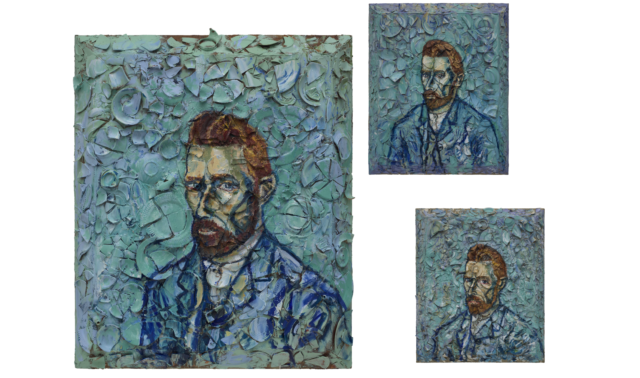
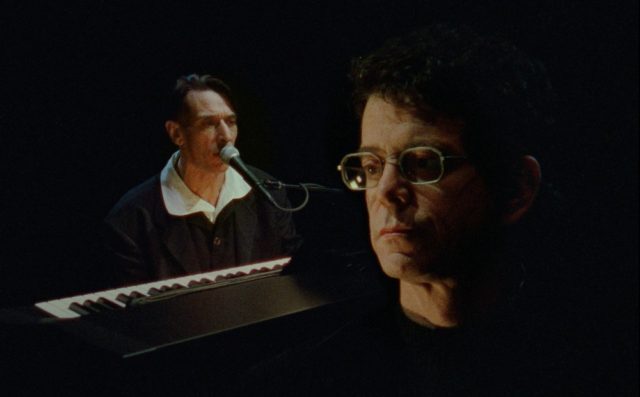
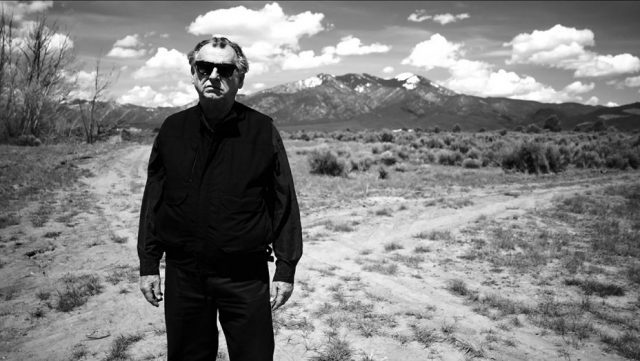
 Just about everyone who has ever seen Easy Rider has imagined themselves on a bike, rumbling across the country with Captain America (Peter Fonda) and Billy (Dennis Hopper), experiencing whatever comes their way. Newark native Satya de la Manitou did more than that, becoming Hopper’s friend and right-hand man for more than forty years. Their intimate and crazy friendship is told in Nick Ebeling’s debut feature documentary, Along for the Ride, which opens today at Metrograph. It would take quite a character to have spent that much time with Hopper — and live to tell about it — and Satya is just that kind of human being, a tough but sensitive, direct, bold man who leads a wild journey into Hopper’s creative process and personal demons. Ebeling follows Satya as he visits with Hopper’s brother, David; actors Russ Tamblyn, Dean Stockwell, and Michael Madsen (who reads a poem he wrote about Dennis); producers Danny Selznick, Lawrence Schiller, and Fred Caruso; directors Philippe Mora, Wim Wenders, and David Lynch; artists Ed Ruscha and Julian Schnabel and gallerist Tony Shafrazi; musicians and composers Damon Albarn and Jamie Hewlett (of GORILLAZ) and Mark Mothersbaugh (of DEVO); and architect Frank Gehry, who sheds a tear when talking about Dennis. Together, they provide a fascinating look into the depth of Hopper’s abilities as an actor, director, photographer, art lover, drug user, and center of attention. “He did everything well, like most geniuses do,” Satya explains.
Just about everyone who has ever seen Easy Rider has imagined themselves on a bike, rumbling across the country with Captain America (Peter Fonda) and Billy (Dennis Hopper), experiencing whatever comes their way. Newark native Satya de la Manitou did more than that, becoming Hopper’s friend and right-hand man for more than forty years. Their intimate and crazy friendship is told in Nick Ebeling’s debut feature documentary, Along for the Ride, which opens today at Metrograph. It would take quite a character to have spent that much time with Hopper — and live to tell about it — and Satya is just that kind of human being, a tough but sensitive, direct, bold man who leads a wild journey into Hopper’s creative process and personal demons. Ebeling follows Satya as he visits with Hopper’s brother, David; actors Russ Tamblyn, Dean Stockwell, and Michael Madsen (who reads a poem he wrote about Dennis); producers Danny Selznick, Lawrence Schiller, and Fred Caruso; directors Philippe Mora, Wim Wenders, and David Lynch; artists Ed Ruscha and Julian Schnabel and gallerist Tony Shafrazi; musicians and composers Damon Albarn and Jamie Hewlett (of GORILLAZ) and Mark Mothersbaugh (of DEVO); and architect Frank Gehry, who sheds a tear when talking about Dennis. Together, they provide a fascinating look into the depth of Hopper’s abilities as an actor, director, photographer, art lover, drug user, and center of attention. “He did everything well, like most geniuses do,” Satya explains.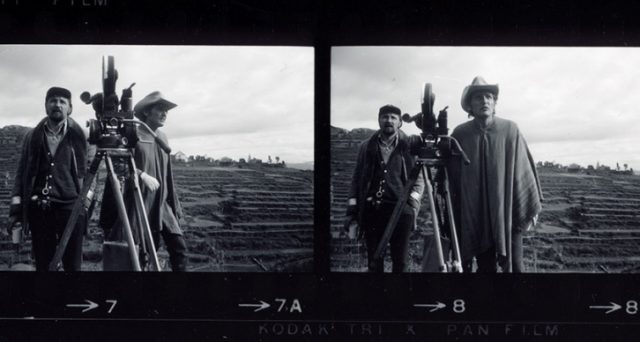
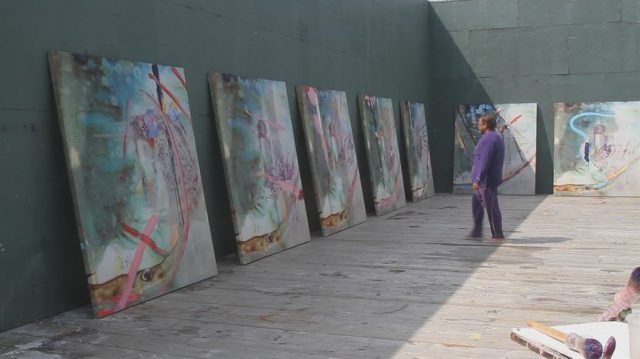
 It’s very possible that superstar artist Julian Schnabel is one of the greatest guys in the world, beloved by friends, family, colleagues, and anyone else who comes into contact with him. I met him once briefly and he was very funny and charming. In Italian writer-director Pappi Corsicato’s Julian Schnabel: A Private Portrait, praise upon praise is heaped on Schnabel, a marvelously talented painter, sculptor, and filmmaker, with nary a glib or less-than-glowing word anywhere to be seen or heard. A longtime friend of Schnabel’s, Corsicato followed the artist for two years and was given full access to his personal archives, resulting in a bevy of fab footage and home movies and photos, from Schnabel as a baby to his surfing days to his family life with his kids and grandchildren. Daughters Lola and Stella rave about him, as do sons Vito, Cy, and Olmo, sister Andrea Fassler, friend Carol McFadden, and ex-wives Jacqueline Beaurang Schnabel and Olatz Schnabel. Also glorying in all things Julian are actors Willem Dafoe, Al Pacino, Mathieu Amalric, and Emmanuelle Seigner, artist Jeff Koons, musicians Bono and Laurie Anderson, gallerist Mary Boone, art collector Peter Brant, French novelist and screenwriter Jean-Claude Carrière, and the late writer-director Héctor Babenco, who all gush about Schnabel’s ingenuity. (Dick Cavett, Takashi Murakami, Christopher Walken, and Francesco Clemente did not make the final cut.)
It’s very possible that superstar artist Julian Schnabel is one of the greatest guys in the world, beloved by friends, family, colleagues, and anyone else who comes into contact with him. I met him once briefly and he was very funny and charming. In Italian writer-director Pappi Corsicato’s Julian Schnabel: A Private Portrait, praise upon praise is heaped on Schnabel, a marvelously talented painter, sculptor, and filmmaker, with nary a glib or less-than-glowing word anywhere to be seen or heard. A longtime friend of Schnabel’s, Corsicato followed the artist for two years and was given full access to his personal archives, resulting in a bevy of fab footage and home movies and photos, from Schnabel as a baby to his surfing days to his family life with his kids and grandchildren. Daughters Lola and Stella rave about him, as do sons Vito, Cy, and Olmo, sister Andrea Fassler, friend Carol McFadden, and ex-wives Jacqueline Beaurang Schnabel and Olatz Schnabel. Also glorying in all things Julian are actors Willem Dafoe, Al Pacino, Mathieu Amalric, and Emmanuelle Seigner, artist Jeff Koons, musicians Bono and Laurie Anderson, gallerist Mary Boone, art collector Peter Brant, French novelist and screenwriter Jean-Claude Carrière, and the late writer-director Héctor Babenco, who all gush about Schnabel’s ingenuity. (Dick Cavett, Takashi Murakami, Christopher Walken, and Francesco Clemente did not make the final cut.) 



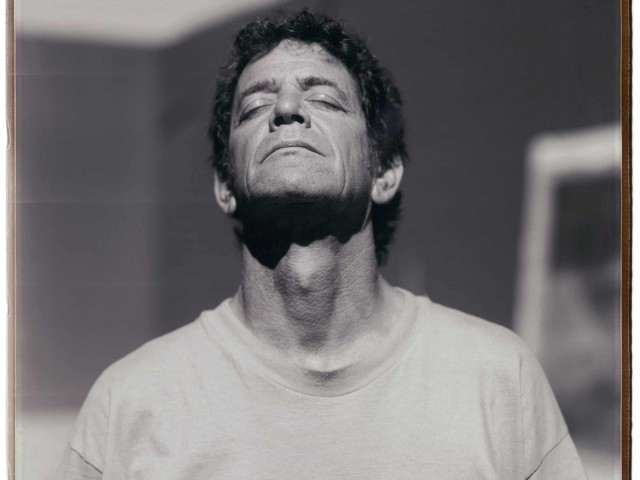
 In December 2006, Lou Reed resurrected his 1973 masterwork, Berlin, a deeply dark and personal song cycle that was a critical and commercial flop upon its initial release but has grown in stature over the years. (As Reed sings on the album’s closer, “Sad Song”: “Just goes to show how wrong you can be.”) The superbly staged adaptation, directed by Academy Award nominee Julian Schnabel (Basquiat, The Diving Bell and the Butterfly), took place at Brooklyn’s intimate St. Ann’s Warehouse, featuring Rob Wasserman and longtime Reed sideman Fernando Saunders on bass, Tony “Thunder” Smith on drums, Rupert Christie on keyboards, and guitarist extraordinaire Steve Hunter, reunited with Lou for the first time in three decades. The band is joined onstage by backup singers Sharon Jones and Antony, the Brooklyn Youth Chorus, and a seven-piece orchestra (including cello, viola, flute, trumpet, clarinet, and flugel). Amid dreamlike video montages shot by Schnabel’s daughter, Lola, depicting Emmanuelle Seigner as the main character in Berlin, as well as experimental imagery by Alejandro Garmendia, Reed tells the impossibly bleak story of Caroline, a young mother whose life crashes and burns in a dangerously divided and debauched Germany. “It was very nice / It was paradise,” Reed sings on the opening title track, but it’s all downhill from there. “It was very nice / It was paradise” might also now serve as a kind of epitaph for one of the most important poets of the last fifty years. Berlin is being shown at Damrosch Park Bandshell at 10:30 on July 30, with headphones available.
In December 2006, Lou Reed resurrected his 1973 masterwork, Berlin, a deeply dark and personal song cycle that was a critical and commercial flop upon its initial release but has grown in stature over the years. (As Reed sings on the album’s closer, “Sad Song”: “Just goes to show how wrong you can be.”) The superbly staged adaptation, directed by Academy Award nominee Julian Schnabel (Basquiat, The Diving Bell and the Butterfly), took place at Brooklyn’s intimate St. Ann’s Warehouse, featuring Rob Wasserman and longtime Reed sideman Fernando Saunders on bass, Tony “Thunder” Smith on drums, Rupert Christie on keyboards, and guitarist extraordinaire Steve Hunter, reunited with Lou for the first time in three decades. The band is joined onstage by backup singers Sharon Jones and Antony, the Brooklyn Youth Chorus, and a seven-piece orchestra (including cello, viola, flute, trumpet, clarinet, and flugel). Amid dreamlike video montages shot by Schnabel’s daughter, Lola, depicting Emmanuelle Seigner as the main character in Berlin, as well as experimental imagery by Alejandro Garmendia, Reed tells the impossibly bleak story of Caroline, a young mother whose life crashes and burns in a dangerously divided and debauched Germany. “It was very nice / It was paradise,” Reed sings on the opening title track, but it’s all downhill from there. “It was very nice / It was paradise” might also now serve as a kind of epitaph for one of the most important poets of the last fifty years. Berlin is being shown at Damrosch Park Bandshell at 10:30 on July 30, with headphones available.